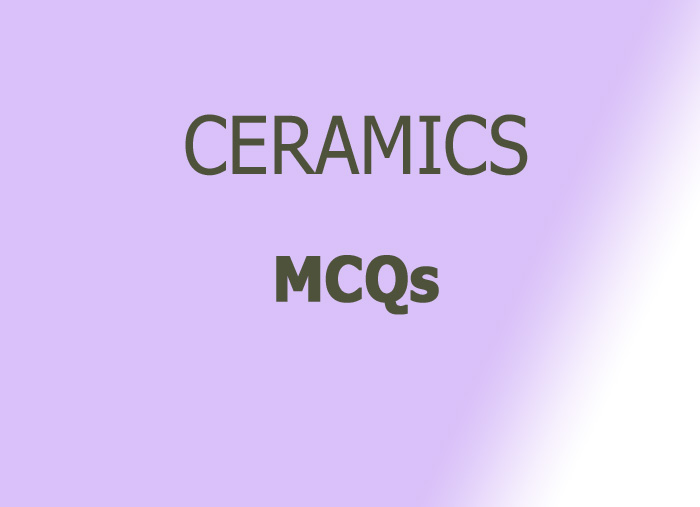- NEED HELP? CALL US NOW
- +919995411505
- [email protected]

1. The opacity in ceramic is achieved by adding
a) Boric oxide
b) Copper oxide
c) Silica
d) Titanium oxide
2. Porosity in Porcelain at condensation stage depends on
a) shape and size of particle
b) uniform distribution of particle size
c) number of particles
d) none of the above
3. flux used in dental ceramics is
a) alumina
b) silica
c) kaolin
d) boric oxide
4. In porcelain metal elements are embedded in the matrix of
a) Rubber matrix
b) Glass
c) Plastic
d) Resin matrix
5. Porcelain is best fired
a) In open air
b) Under air compression
c) When several layers are fired simultaneously
d) Under minimum pressure
6. Which is not present in porcelain
a) Silica
b) Feldspar
c) Calcium carbonate
d) Amorphous material
7. Machinable glass ceramic is
a) Cerestore
b) Decor mgc
c) Infusium
d) Leucite
8. Porcelain binds to metal in pfm crown by
a) Metallic bond
b) Mechanical bond
c) Chemical bond
d) B and C
9. Dental porcelain are crystalline materials of
a) Rubber
b) Plastic
c) Plastic organic substances
d) glass
10. Compared with dental alloys, ceramics show
a) High ductility
b) High hardness
c) Low aesthetic value
d) Susceptibility to brittle fracture
Answers with explanation
1. D
Pigmented oxides are added to glass to simulate the shades of natural teeth.
zirconium oxide, titanium oxide-opaque
copper oxide- green
iron oxide- brown
titanium oxide-yellow
2. A
Through condensation helps in producing dense packing. dense packing of porcelain powder decrease porosity and firing shrinkage.
3. D
4. B
5. D
Firing in vacuum or reduced pressure prevents porosity. firing for a long time causes changes in the leucite content and produce stress is sufficient cause crack in the porcelain size of the powder particles influences porosity and firing shrinkage.
6. D
Porcelain is a vitreous ceramic consisting of silica, or potash, feldspar, pigments, opacifier, and glass modifiers. glass modifiers decrease sintering temperature and increase the coefficient of thermal expansion and solubility of porcelain.
7. B
Castable or machinable glass ceramic – dicor, dicor mgc
Glass infiltrated ceramic – inceram, inceram spinel
Injection molded cceramic- IPS Empress, IPS Empress 2
shrink free ceramic- cerestore
8. D
porcelain binds to metal in metal ceramic restoration by mechanical interlocking and chemical bonding. Mechanical interlocking is provided by proper wetting of the metal surface by porcelain.
The adherent metallic oxides, which are formed during the degassing cycle form a good chemical bond with porcelain.
Tin oxide and Indium oxide are formed from precious metal alloys while chromium oxide is formed from base metal alloys.
9. D
10. D




